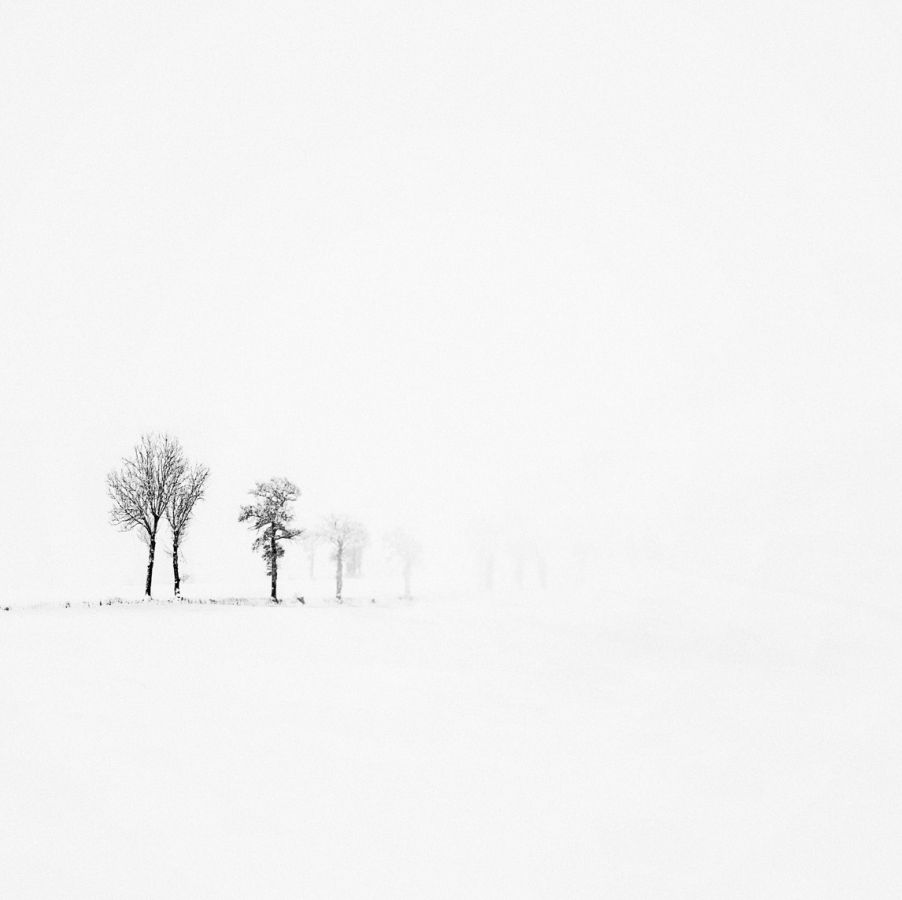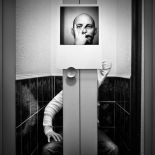What qualities attract you in a landscape?Landscapes that
have something to say with their form. Initially, what strikes me is a
geometry of nature; it’s more or less pronounced, but always there. In
fact, these forms are a symptom and/or a trigger: a symptom in that they
can reflect a reality of mankind, the world, perhaps even a surreality;
a trigger in that any landscape I photograph is in a sense romantic, a
mirror for the beholder, and therefore a “canvas” on which the
photographer’s state of mind is projected. To me, a landscape is always a
state of the world, a state of mankind, but also a state of mind…
You shoot exclusively in black and white: does this serve the desire for introspection and silence that permeates your work?I
would tend not to directly articulate the issue of black and white with
that of silence, introspection, and – might I add - melancholy.
Actually,
black and white is to me – at least for now – self-evident, a natural
and spontaneous "grammar". And if I see in black and white, it’s
probably because I am sensitive to visual stimuli that call for black
and white: plays of contrasts, of graphics. Black and white is a way of
expressing things that focuses on the essential; it strikes me as a
sounding chamber where, paradoxically, you can hear the silence, and
therefore experience yourself facing the world (introspection lies at
the end of this silence).
Do you shoot in any season, at any time of day, or are there moments that you are particularly fond of?I can answer this question on two levels: inspiration and technique.
As
regards inspiration, I work a lot in phases (there are times when I'm
grabbed by an irresistible, almost existential urge to photograph), and
through impulse (sometimes, it just takes a triggering visual element to
restart the creative dynamics that may have been dormant for a while). I
can stop shooting for long periods of time, even if the weather was
conducive of interesting shots.
In terms of technique, it’s true that
some lights inspire me more than others, and such lights appear more at
certain times of the year: in this instance, the spring, autumn and
winter. It’s characterful lighting I’m interested in: it’s usually
contrasting cloudy skies that offer interesting textures. I am lucky
enough to live in a hilly area where the terrain and air movements yield
original skies. To me, it’s the effects of the light that change
perceptions of what we see: it’s a prism transforming reality.
Which authors would you say have influenced you?In
photography, the list of influences can be long… and very eclectic,
because I do not feel I "belong" to a specific photographic genre. I
actually see strong things in artists such as Cartier-Bresson, with his
keen sense of composition and framing. Some humanist photography "talks"
to me a lot. Lucien Hervé is also a reference, because of his sense of
light, and how he uses it to cut out reality. To name but a few others, I
could tell you about Michael Kenna and his sense of the essential.
Photographers like Koudelka or Paolo Nozolino have struck me with the
sense of tragedy that emerges from their work, and the density of their
black reflects an existential density that has a powerful appeal.
I
came to photography through writing… that discusses images: in both
cases, what I’m interested in is the suggested, the implicit, the
association of ideas. An image has to say something, but what it says
doesn’t need to be revealed immediately: connotation is an essential
poetic process. This why, in painting, I love it when the work is not an
“as is” depiction, but what you look for in the fog of representation
(the word fog makes me think of two very different painters: Turner,
with his evanescent paintings, and Rothko, with his abstract veil of
vibrant colours that make me think of fog that you must cut through to
discover what’s there to be seen and understood).
Limited edition, numbered and signed.

 He likes black and white, his 6x6 camera's square format, landscapes and
architecture. French photographer Sylvain Lagarde travels the land and
lets himself be carried by the spaces he encounters. Constructions with
streamlined shapes and powerful lines, vast and minimalist
landscapes... his style of photography lets the location appear and
occupy the frame. For him, black and white serves either to reinforce
the structure of the subject, through the use of stronger contrasts, or
to allow the expression of an ethereal atmosphere through the use of a
full range of greys. In the snow-covered expanses he so loves, trees
becomes frail, black silhouettes dotted across the landscape's vast,
pristine white veil. Here, as in other spots Lagarde enjoys, his images
call for contemplation.
He likes black and white, his 6x6 camera's square format, landscapes and
architecture. French photographer Sylvain Lagarde travels the land and
lets himself be carried by the spaces he encounters. Constructions with
streamlined shapes and powerful lines, vast and minimalist
landscapes... his style of photography lets the location appear and
occupy the frame. For him, black and white serves either to reinforce
the structure of the subject, through the use of stronger contrasts, or
to allow the expression of an ethereal atmosphere through the use of a
full range of greys. In the snow-covered expanses he so loves, trees
becomes frail, black silhouettes dotted across the landscape's vast,
pristine white veil. Here, as in other spots Lagarde enjoys, his images
call for contemplation. 